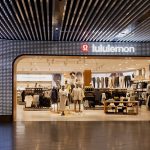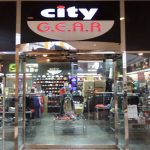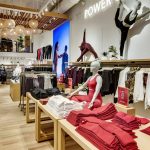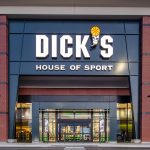Two companies that have struggled in recent years –Billabong and Boardriders (formerly Quiksilver) – have agreed to merge in hopes of faring better together tackling the brutal action sports marketplace.
Based in Huntington Beach, CA, Boardriders owns Quiksilver, Roxy and DC Shoes. Based in Australia, Billabong owns Billabong, RVCA, Element, VonZipper, and Xcel. The combination will create the world’s leading action sports company with sales to over 7,000 wholesale customers in more than 110 countries, owned e-commerce capabilities in 35 countries, and over 630 retail stores in 28 countries.
On December 1, Boardriders made an offer to acquire the company and Billabong indicated that its board would evaluate the proposal. But a deal was long expected to happen.
Boardriders, through its Los-Angeles-based controlling fund, Oaktree Capital Management, already owns 19 percent of Billabong; and Oaktree is one of Billabong’s two senior lenders. In January 2016, Oaktree Capital acquired Quiksilver Inc. as it emerged from bankruptcy protection and became a privately-held company. Dave Tanner, an Oaktree managing director, became the chief turnaround officer of Quiksilver, which renamed itself Boardriders.
Including the assumption of debt, the deal values Billabong at about 400 million Australian dollars (U.S. $315 million), or 79 cents a share. Under the terms of the deal, all of the shares in Billabong, other than those already owned by Boardriders’ related entities, will be acquired at a price of Australian $1.00 (76 cents) in cash per share.
In 2012, Billabong rejected a takeover bid steered by Oaktree Capital worth more than four times the sale price agreed on Friday although business conditions in the action sports have deteriorated in recent years. Only recently have two of big publicly-held U.S. chains serving the space, Zumiez and Tilly’s, shown some recovery.
Upon closing of the transaction, Dave Tanner, currently managing director at Oaktree and chief turnaround 0fficer for Boardriders, will become CEO of Boardriders. Pierre Agnes, currently CEO of Boardriders, will become president of Boardriders, remain a board member, and lead a substantial portion of the integration of the two companies. A 29-year veteran of Quicksilver, Agnes was promoted to CEO in 2015.
Boardriders in its statement said the combination will create a “highly diversified business serving action sports enthusiasts across a wide range of products and unique communities. The statement added, “Importantly, the strength created by the combination will also allow for deeper and more mutually beneficial partnerships with customers and suppliers, and enable additional investment in the brands and in the action sports industry overall.”
Boardriders also said that under the full ownership of Oaktree Capital, it has “dramatically improved” its operational and financial performance since a turnaround began in February 2016. The statement read, “The company rationalized its distribution, right-sized its cost structure, rewired its product development platform, and invested in a range of growth-enhancing brand, marketing and e-commerce initiatives. The successful turnaround of the company and reconfiguration of the Boardriders platform has created the opportunity to bring the Billabong brands onto the same back-office operating platform to accelerate their growth as well.”
Tanner said in a statement: “The combination of these two leading action sports companies, which include a broad range of iconic brands with deep heritage in surf, snow and skate, is very exciting for all of us who share a passion for outdoor action sports. We are committed to preserving the autonomy, creativity, and unique cultures of all the brands while we leverage our best-in-class operating platform to accelerate the growth of the brands globally.”
Agnes added: “Creating one integrated global platform will enable the combined company to enhance its investments in product innovation and quality, digital marketing, consumer engagement, and e-commerce, which ultimately will benefit our consumers and strengthen the company and industry. With a larger and stronger platform, we see many exciting opportunities for our employees, customers, suppliers, and athletes.”
Billabong has only turned a profit in one of the past five years. In 2013, it embarked on a restructuring plan that called for a streamlining of its business from a regional to a global focus, a focus on its three primary brands (Billabong, RVCA and Element), as well as an emphasis on digital engagement with its younger consumer base. But the payback has been slow and recent strength in the Americas and Europe have been offset by weakness in its home market in Australia.
Billabong suffered an Australian $77.1 million loss in its fiscal year ended June 30 against a loss of Australian $23.1 million a year ago. The loss in the latest year ended June 30, 2017 came after an impairment charge related to the difference between the company’s share price and the carrying value of its net assets.
The future of Neil Fiske, the current CEO of Billabong Group who has been steering the turnaround, is up for discussion. “We have a high regard for Neil and what he has accomplished over the years,” said Matt Wilson, Boardriders’ chairman. “I very much hope that he will join us for the next leg of this journey.”
The acquisition is subject to a number of customary closing conditions, including shareholder, court and regulatory approvals. The transaction is expected to close in the first half of 2018.
According to separate statement from Billabong, Billabong’s directors unanimously recommended that Billabong shareholders vote in favor of the “Scheme Implementation Deed,” in the absence of a superior proposal and subject to the independent expert concluding (and continuing to conclude) that the Scheme is in the best interests of Billabong shareholders.
Among the reasons the board gave for recommending the combination was that the purchase price represents a 28 percent premium to Billabong’s closing price as of November 30 and 52 percent over the average selling price over the last six months to that date.
The price also implies an EV/pro-forma FY17 earnings before interest tax depreciation and amortization, excluding significant items (EBITDA) multiple of 7.4×3 and an EV/pro-forma FY17 EBIT multiple of 16.6×3.
Finally, Billabong said that in absence of the merger, Billabong’s shareholders faced “ongoing risks and uncertainties associated with Billabong’s business” and the deal “provides shareholders with certainty of value and the opportunity to realize their investment for cash.”
Billabong Chairman, Ian Pollard, said: “While Billabong has made significant operational progress in recent years, the Board is also mindful of the fact that, in the absence of the Scheme, Billabong shareholders face ongoing risks and uncertainties associated with the business. These include risks relating to the state of the global retail market as it affects both Billabong and its wholesale customers; the operations and project risks associated with the execution of Billabong’s strategy; and risks relating to the refinancing of its debt. In particular, the Board considers that it will become necessary for Billabong to materially reduce debt if it is to continue with its current strategy which, given the company’s existing high debt levels is expected to require asset sales or a dilutive equity raising. Having regard to these factors, and the fact that shareholders are being offered an attractive premium for their shares, the Board believes this offer is in the best interests of shareholders.”
The sale comes as its Americas business is seeing a turnaround, at least from a profitability standpoint.
In the Americas, revenues for its fiscal year ended June 30 declined 10.1 percent in the year to Australian $432.9 million and were down 7.5 percent on a currency-neutral basis. But EBITDA jumped 46.9 percent prior to global allocations.
When results came out, Fiske said that the face of challenging market conditions in North America, the top line was planned conservatively and intense focus was placed on controlling inventories, streamlining the organization, reducing cost, improving its own retail, growing e-commerce and expanding gross margins through its sourcing and concept-to-customer projects.
“Market share gains achieved in the core specialty channel by Billabong and RVCA, overall, and in both the men’s and women’s divisions, are a reflection of brand quality and resonance with consumers,” said Fiske. “This ongoing brand strength is also an important factor in gross margin expansion in the region.”
He added, “A surge of momentum for brand Billabong in the Americas was particularly noteworthy this year and gives us a lot of enthusiasm going forward.”
Overall, Group EBITDA in the year of $51.1 million was up 2.8 percent on a currency-neutral basis and 0.3 percent as reported and were less than a million dollars below the guidance range due to weak retail conditions in its home market in Australia. The Europe region delivered its fourth consecutive year of EBITDA growth
Among its brands, Billabong continues to hold its own in a challenging surf market, Fiske said at Billabong’s annual meeting held on November 17. Fiske noted that in every year since 2014, the Billabong brand has widened its number one share position in the core market. Billabong now has twice the share of its nearest competitor in the U.S., according to independent industry research from ActionWatch, he stated
RVCA, with broad appeal across a number of action sports youth subcultures from art to surf to skate and mixed martial arts, has the potential to expand two to three times its current size, Fiske added.
“On every dimension of what we call the growth cube – channels, geographies, and categories – there is ample opportunity ahead,” said Fiske of RVCA. “Men’s, Women’s, and Kids. Categories like RVCA sport and accessories, which are just getting going. Geographic expansion in APAC, Europe, Brazil and emerging markets.”
Element, marking its 25th anniversary in 2017, saw a leadership change last year. Europe is currently the biggest market for the skateboarding brand with U.S. being prioritized for growth.
Fiske said in Friday’s statement, “Billabong’s brands’ great strength is their authenticity and heritage. I’m confident those qualities will not simply be protected but enhanced by a new organization that will have the scale and financial security to continue to support and build them as we enter into a new and dynamic retail environment.”
Photo courtesy Billabong
















